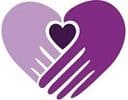In footage posted on YouTube in January, an outraged young Indian woman wields a cellphone to film a middle-aged man she accuses of groping her – twice – between the seats on an IndiGo Airlines flight. ‘I’m videotaping you, mister!’ she tells him as he mumbles apologies. ‘If you ever do this again, you’ll remember this episode.’
Reports of harassment and rape of women are soaring, especially in countries with rapid social change such as Africa, Brazil. Mid East – and women are fighting back with their phones. It began in the wake of the horrific gang-rape of Jyoti Singh, a 23-year-old medical student, on a bus in Delhi in 2012. Six men sexually assaulted her with an iron rod and threw her naked from the moving vehicle. She died 13 days later. The following year, reports of rape in India spiked 35% to 92 a day, triggering protests and political investigations.
In a country where ‘Eve-teasing’ (harassing unaccompanied women) is widely accepted and women are blamed for provoking it with their ‘behaviour’ or dress, the most striking response came from women themselves. Last November, a 27-year-old woman and four girlfriends were parked outside an ice-cream shop in Bangalore when a pack of baying men surrounded their car, trying to force open a door to reach them. She filmed their plight on a smartphone. The 45-second clip went viral, shocking the world and identifying the men. In 48 hours, six had been arrested.
When another young woman was reportedly raped in an Uber car by her driver in Delhi in December, she too whipped out her phone, and snapped the licence plate. The driver was quickly arrested and charged
Before this, it appears that gender-rights organisations have had no cases of women using phones against rapists or harassers but spokeswomen support the idea – in principle. Cellphones and technology give women a tool to report a crime and get help when needed. From tracking devices on phones to the ability to message someone when you sense danger, a cellphone can be the difference between life and death.
Carrying a phone can give a woman greater confidence,’ says Dey, confirming a study by the Cherie Blair Foundation for Women and the GSMA (an association representing 800 mobile operators worldwide), which showed 85% of women felt more independent with a cellphone and 93% felt safer. ‘But cellphones are a good thing only if there are services (including the police) to back them up – and that’s not always the case.’
Phone a friend
A number of mobile apps have been developed to make messaging for help and sending pictures easier and faster, and so safer. In January, India’s home affairs minister responded to attacks there by launching Himmat (‘Courage’), an app that allows women to send distress calls and the phone’s location to police control rooms and two relatives or friends in an emergency. Uber too announced plans for an app that will allow passengers to share GPS-tracking information and their driver’s photograph, name and licence number with selected family or friends.
African women can already access similar apps, such as Circle Of 6, which Dey says some women have downloaded, though none has yet had cause to use it. In this free app, a tap of an icon sends a text to your preset six emergency contacts, alerting them that you need help and giving your location. PanicGuard is activated by tapping or shaking your phone, and automatically records your location, calls the emergency contacts you’ve stored, and turns on video to record any crime. Another shake, and it emits a piercing alarm.
